How I Warmed Up to AI in My Creative Design Process as a Design Director
After being super skeptical about it. Here’s why and how.
It’s been a while since I last wrote here, and truth be told, I’ve been deep in an AI rabbit hole. AI image generator is still causing a bit of a stir in the creative world. There’s controversy, no doubt, but I decided to dive in myself and see if AI could unlock something new in my creative process. The short answer? I don’t think AI will ever be a single tool in my creative process. But I definitely see how it could help with my concept/design process. And in this article, I’ll tell you why.
It all started last year when I kept seeing these sci-fi-esque AI-generated images pop up in my feed. The most memorable one was probably that Balenciaga x Harry Potter video that went viral. Then, I stumbled upon an article about Maison Meta, an AI creative studio, holding the first-ever digital fashion show featuring AI-generated designs. Bold concept, sure, but let’s just say… it was like the future but it didn’t exactly resonate with me.


As more of these AI-driven stories kept cropping up in the media, I started asking my designer friends if any of them were jumping on the AI bandwagon. Most of them—working for designer brands—were pretty dismissive. “No thanks,” or, “Got no time for that.” But then one friend told me about her friend who worked for a fast-fashion brand. Apparently, the entire team now exclusively uses AI-generated images for internal concept meetings. I was flabbergasted. Fast fashion adopting AI? Sure. But replacing the entire creative process with AI-generated imagery? How were they conveying mood and aesthetics with these sci-fi looking images? My head was spinning.
Sound familiar? If you’ve had similar thoughts about AI in design, you’re not alone.
My First Encounter with AI Image Generators: A Complete Disaster
Naturally, I had to give it a shot myself. I dove into MidJourney, DALL-E 2, and a few others. Eventually, I settled on MidJourney via Discord. Long story short: The results were… BAD. None of the images matched my personal aesthetic. Most importantly, trying to articulate what I was envisioning in prompts just didn’t translate.
I figured it was a skill issue, so I turned to ChatGPT, hoping it would help refine my prompts. But even after several more attempts, I was chasing my tail. The images were unpredictable. Weird. Cheesy. Ew. Not good. Definitely not the vision I had in mind.
Back in November 2024, I wrote an article expressing my concerns about AI in the creative process and whether it might end up stifling creativity.
Sybille de Saint Louvent’s AI Work
But then, a little lightbulb moment. Early this year, I came across Sybille de Saint Louvent’s imaginary campaigns, and suddenly, I was intrigued. Her AI-generated images felt aligned with her personal aesthetic (from what I could gather from her non-AI works on Instagram), and—crucially—they didn’t look like they belonged in a bad sci-fi movie.
If you asked me whether these images are truly groundbreaking or inspiring compared to human-made creative assets, I’d say "no." But they were impressive enough to make me reconsider my stance and dive deeper into AI’s potential.


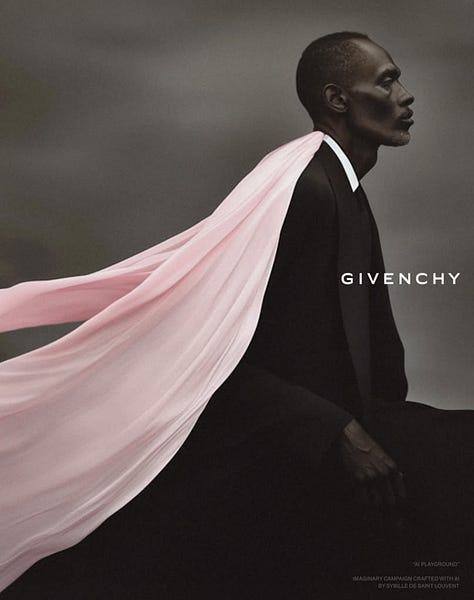
I posted about this earlier this year in response to
’s note about Sybille de Saint Louvent’s imaginary campaigns. Link.The Breakthrough: Key Factors
After several months of failed attempts, I’ll admit, I’m finally starting to see progress. The quality of the AI-generated images is improving, and I’m discovering ways to work with AI that feel more in tune with my vision. I’ve been posting some of my latest creations in my notes section. And I will be posting more. Here are some examples.
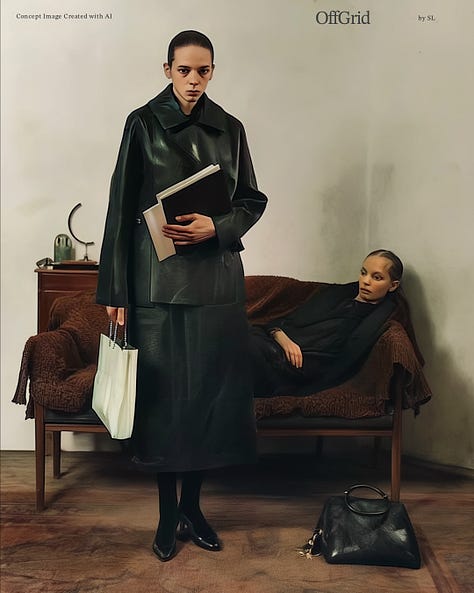
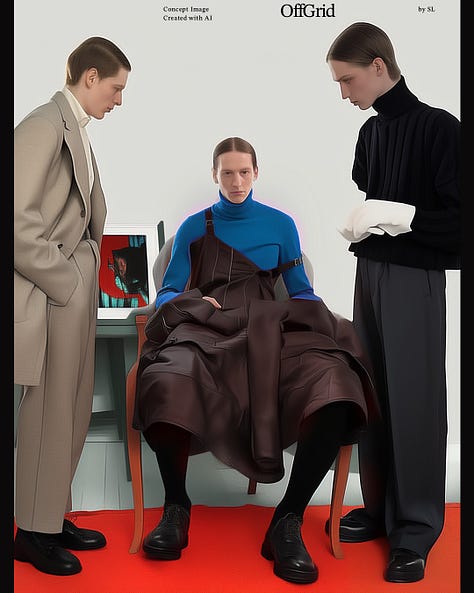
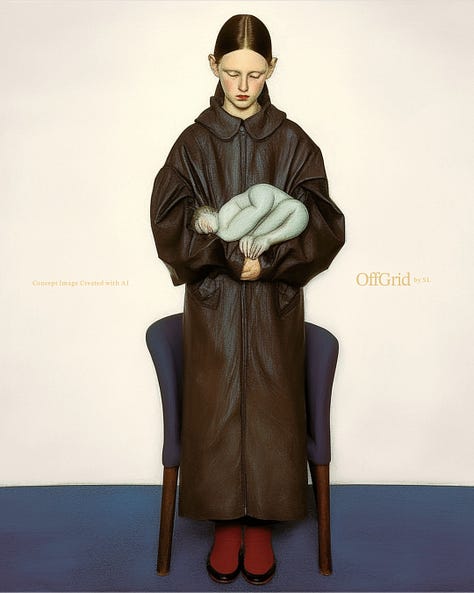
Here are a few key things I’ve learned that helped me break through:
The simpler your prompts, the better the results. When you give AI more creative freedom, the images tend to be better. The more specific your instructions, the more restricted the results become. It’s weirdly similar to collaborating with creatives—sometimes the best results come when you let them have the space to work their magic.
Use reference images. Less is more. It turns out that providing a good reference image and using fewer words works wonders. Letting AI take the reins a bit and not over-explaining things results in better, more inspired outcomes.
You can’t use AI simply to "visualize" your vision. You have to let go of a bit of that creative control and let AI “imagine.” Then, sift through the results to see if anything aligns with your intention. In a way, it’s like scrolling through algorithmic content and stumbling upon something that just clicks.
Does this sound like it defeats the purpose of adopting AI in your creative process? I get it. But bear with me. There’s more to this.
Where I See Incorporating AI Could Be Helpful
Now, if you’re still with me, you might be thinking, “Okay, cool, but how does this tie back to the title of the article?” If you’re a seasoned design creative, you know that a few AI-generated images that look like editorial shots don’t exactly help when it comes to designing a collection.
Let me walk you through the process of concept and design development to explain.
Traditional Design Process
In the traditional design concept process, we gather inspiration. Vintage shopping, concept styling, flipping through runway shows, art books, archives—anything that sparks a new idea. It’s all about feeding yourself with liquid sources of inspiration. The goal is creating something new. How you get inspired doesn’t matter so much, as long as the end result is fresh.
Concept development doesn’t just stop when you finish putting together a mood/concept board. Real development happens when you have an ‘interactive moment’ with your inspiration. This could be when you have a concept fitting with the reference garments you’ve collected—how they fit, how they work with the rest of the collection, the whole process of interacting with a model while the right music plays, the vibe, the aesthetic. That’s when these pieces of inspiration stop being just references and become “your design.” Because now you’re adding your own interpretation in a unique way. The same goes for inspiration images. You don’t just “copy and paste.” You interact with them through sketching, draping, and Photoshop mock-ups.
The Challenge Stage (AKA Creative Fatigue)
Here’s the tricky part: the “brain-fog” or “creative-fatigue” stage. We’ve all been there—whether it’s at the beginning of the season, mid-way through, or even as you're heading toward the finish line. Inspiration seems to have disappeared. You’re stuck. You can’t process anything anymore. And if you’re like me, you might spend hours staring at your concept board, or scrolling frantically through the internet, trying to find that spark or solve that one idea that’s just not coming together. But, as you know, the fashion calendar doesn’t always wait for you to have a creative breakthrough. You’ve got deadlines. You’ve got milestones. You just have to keep going.
That’s where I see AI playing a role—helping you break through the “stuck” phase, no matter when it hits. If you know how to use it right, AI can become a creative partner, whether you’re concepting for a new season, fitting samples for one collection while altering another, or juggling a special project.
That one concept you know will elevate your collection, but you just can’t quite figure out how to bring it to life? Or that wild, unfiltered idea inspired by an art piece, but you don’t know where to start? AI might just throw something at you that sparks a fresh direction. Sometimes, it’s the weirdest, most chaotic results that lead to the most unexpected breakthroughs. Feed AI something out of left field, and it could surprise you with the perfect “happy accident.”
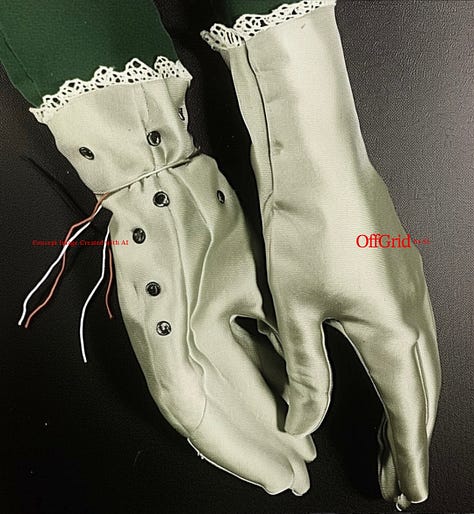
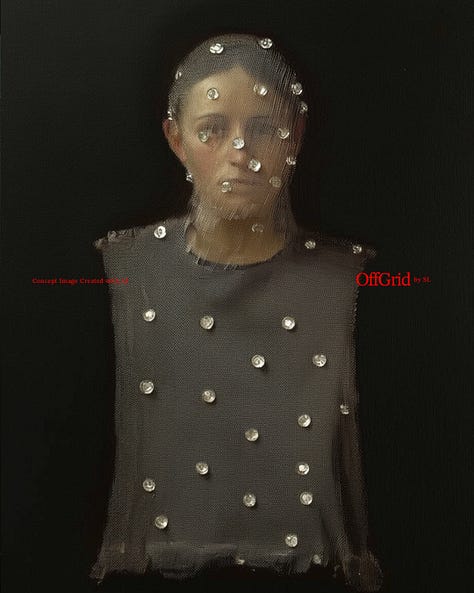
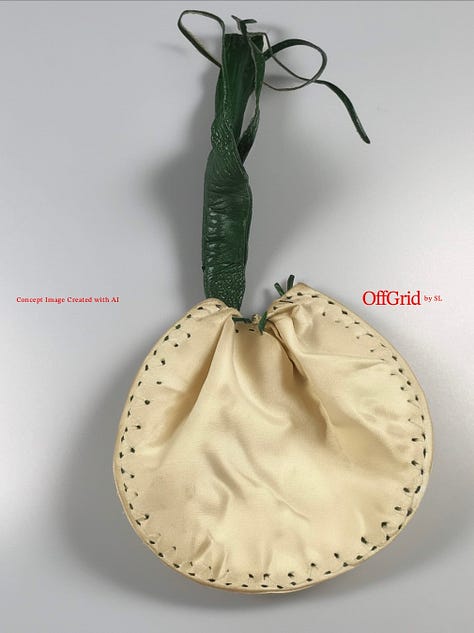
At the end of the day, I value keeping my creative process flowing rather than dwelling in that brain-fog stage. Whether it’s AI-generated images or something I find on the internet or a great vintage find, as long as it sparks an idea and I can make it my own, that’s what counts.
Bridging Ideas and Reality with AI
AI can also play another crucial role: bringing your design ideas to life and communicate them more effectively. As a designer, you often have an idea, but before you can fully develop it, you need to make others get it. Take footwear design, for example. Let’s say you’re trying to sell your concept to your director, or maybe you’re the director trying to explain to your footwear designer exactly what you envision with these two images.
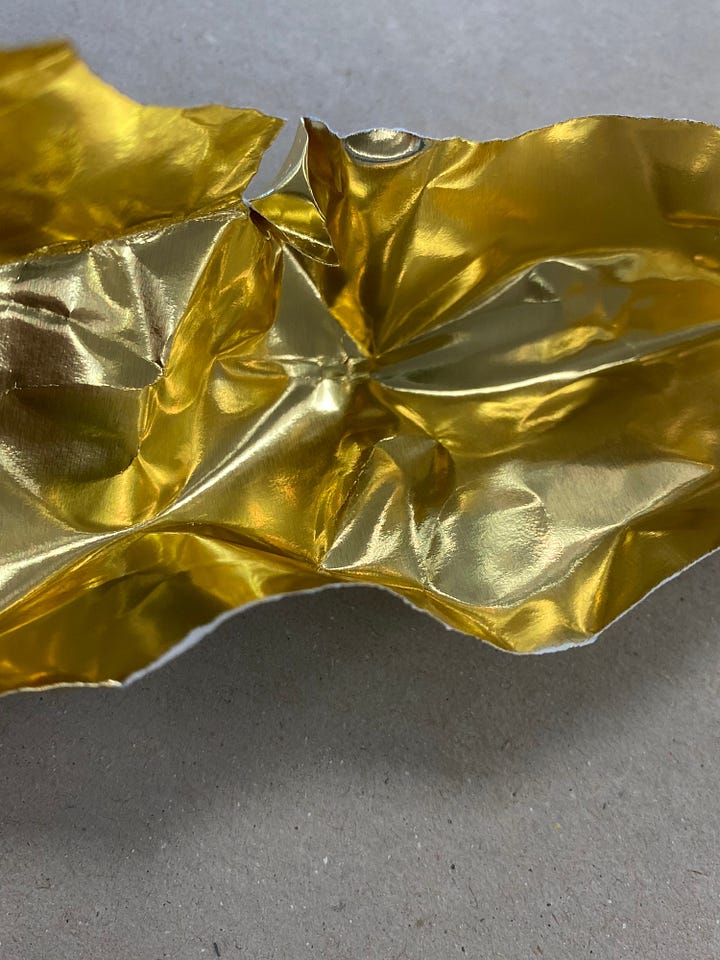
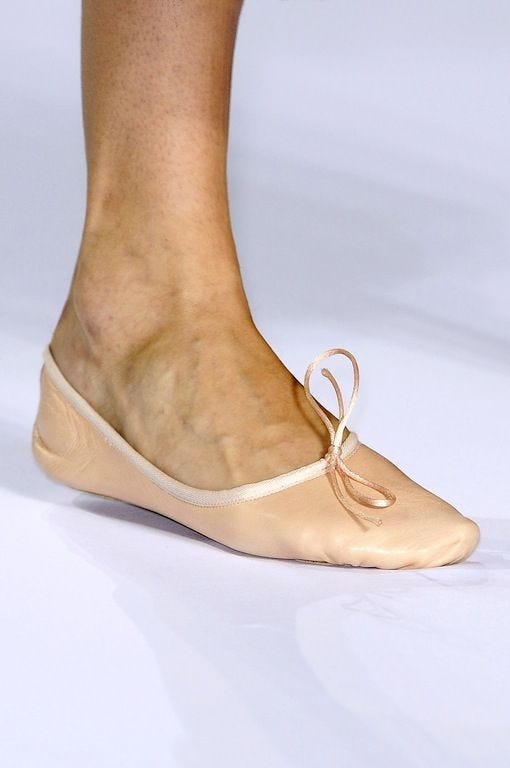
If you tell them you're thinking of this papery, metallic leather material for soft-constructed ballet shoes with thin outsole, most designers would get the idea. But, it’s hard to truly envision how this material will play out in the design until you see a sample or if you’ll even like it once it's real. But if you are able to create AI concept images that align with your vision, it can help you understand what you want more clearly and communicate it more efficiently.
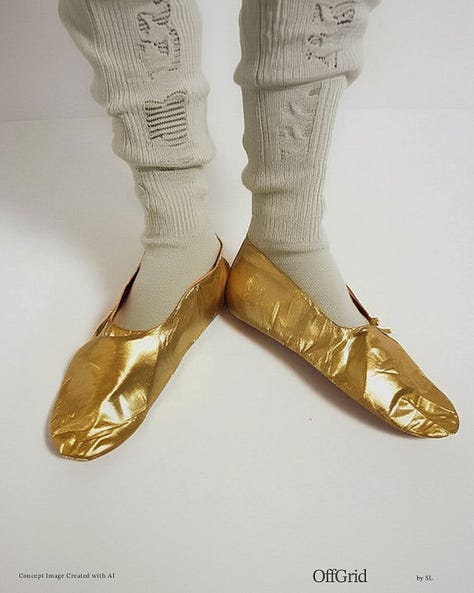
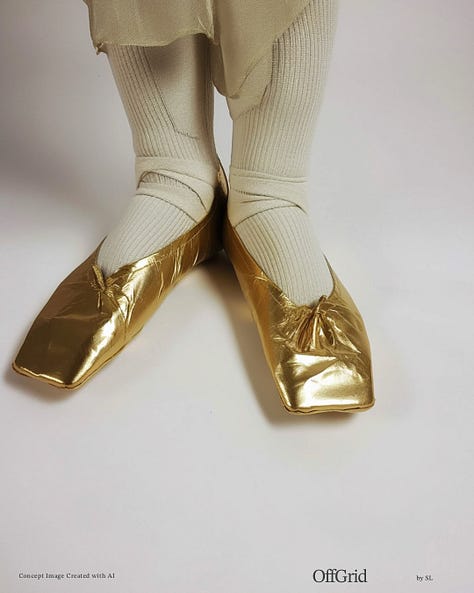
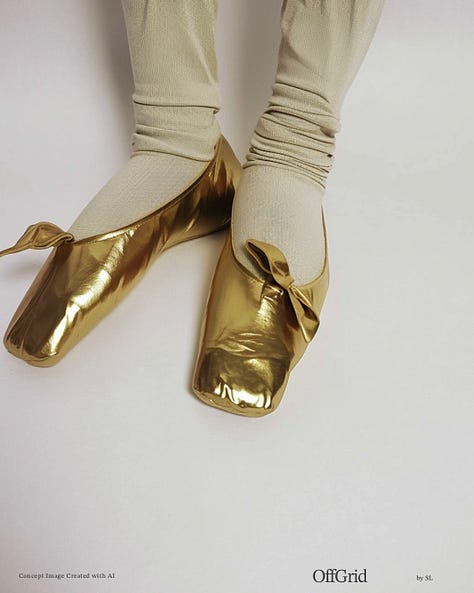
These are the thoughts that flood my mind when generating these concept images with AI. For example, with the first concept image, I might be considering: "Do I like this look where the shoe seems constructed with no lining at all, to keep the papery feel?" And then I might think, "Actually, I really like this. It gives off that soft, raw vibe I’m going for. Now, how do I make this idea work in terms of durability and functionality?"
On the other hand, the second concept image could make me think, "Hmm, I’d need to add lining or fusing to give it more structure." I might also be looking at that square toe shape and thinking, "This shape is working for me, but I need to sketch further into it."
It’s kind of like the process you’d go through with sketches or mockups, but the difference here is that AI offers much stronger visuals and ideas right away. It helps you quickly sort through possibilities, identify what resonates, and guide you toward the best direction for the design. From there, you can take those insights and refine them even further. And of course, you’ll still present your own sketches alongside this AI-generated concept to flesh out the full picture.
What’s Next for AI in Design?
I’m still figuring it out. Maybe I’ll swing back to being anti-AI at some point, but for now, I’m genuinely curious about what AI can offer and how far I can push it.
A few questions are still swirling in my mind:
Can AI diversify in terms of aesthetics? So far, the results I’ve been getting lean toward that luxurious, clean vibe you see in brands like Prada or The Row (which I do love). But can AI help conceptualize something more lo-fi and raw?
Can AI contribute to the storytelling aspect of visuals? The variables in these images have definitely kept me inspired during the concept stage, but there’s still that elusive magic missing. That feeling you get from truly inspiring imagery—something that carries not just a pretty picture, but a story, an emotion, or an idea.
I’m still on this journey of discovery, and I’m excited to keep experimenting. If you want to follow along and see what I learn, subscribe to my newsletter. :) Thank you for reading my article as always!





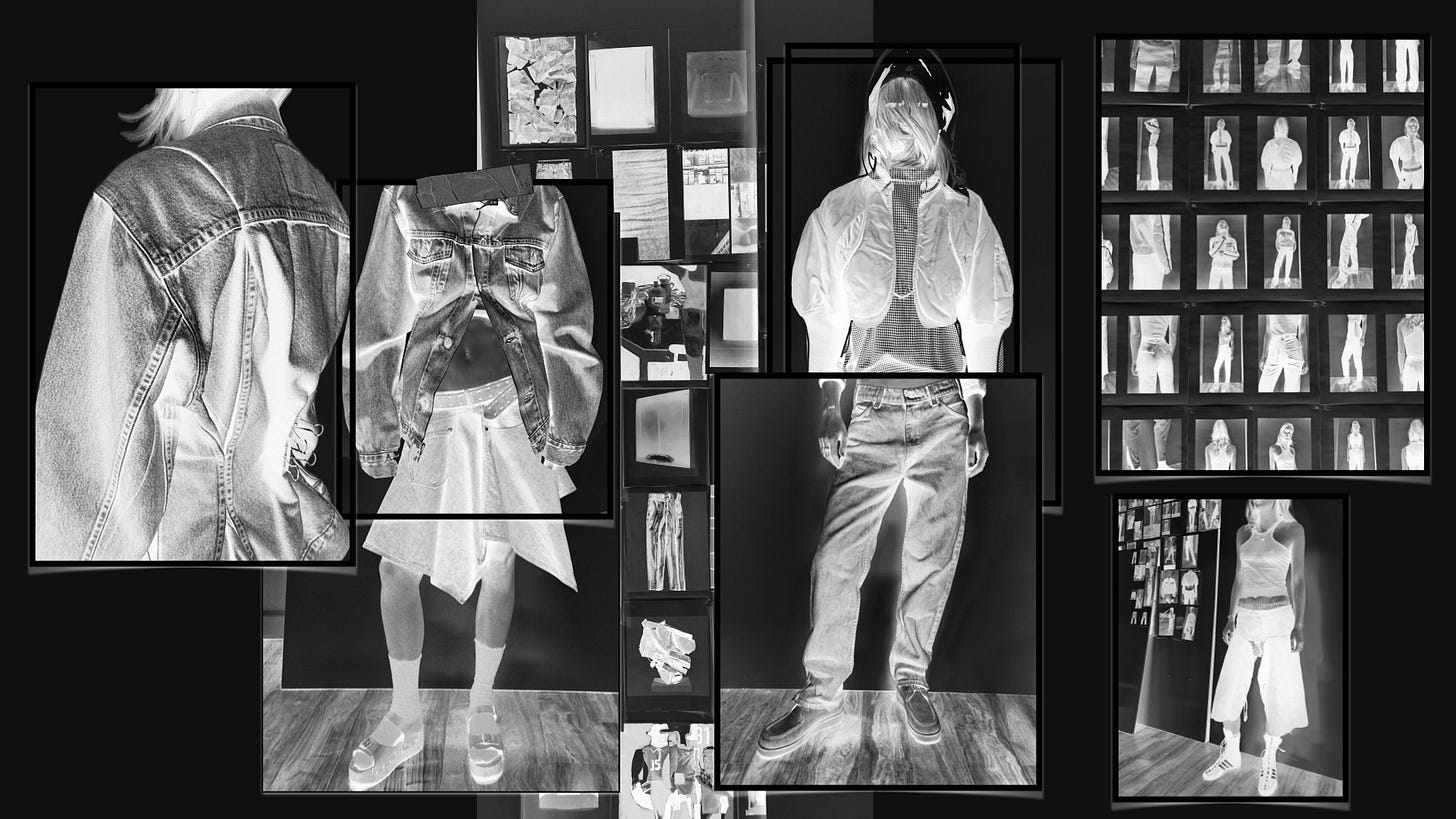

Love that you shared this. AI is still a hard sell for a lot of creatives, or a lot of people are using it in secret like clients i work with or students I teach. I did have some ideas of how you can get results closer to what you are looking for (i specialize in photorealistic ai image design for aspirational luxury beauty, fashion, lifestyle and wellness brands). What you said about leaving flexibility in your prompts is true, however you want to give more direction in regards to type of camera, film stock, lighting direction, color grading etc.. That’s how you get the furthest away for that flat ai look and sheen. and you can create any aesthetic using Ai - i’ve created over 30,000 images in different directions for myself and for clients. Bring in the branding and the aesthetic key terms. you can also use keywords and reference images like film grain for more effects. hope this helps!
Really filled the gap in the market with this article! I was stuck for so long on creating visuals that looked like it was part of a story. I suppose with time AI might become more intuitive on that matter especially with the rise of creatives turning to AI for conception work. Did you end up continuing to use Midjourney through discord even after the several months of trial and error?